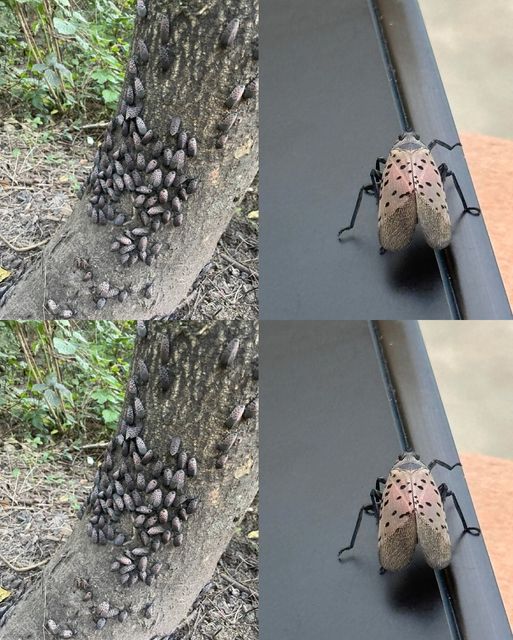How to Identify a Lanternfly
Proper identification is key to controlling the spread of lanternflies. Adult lanternflies are about half an inch across and an inch long. They have gray wings speckled with black, and their underbelly displays a striking pattern of red and black. When in flight, their crimson underwings are particularly noticeable. Nymphs, or juvenile lanternflies, start off black with white spots and turn red as they mature.
Feeding Behavior
Lanternflies use their long, needle-like mouthparts to pierce plant tissues and feed on sap. This feeding method can drain a plant of its vital nutrients, weakening it significantly. Observing them in action on my plants was both fascinating and alarming.
The Spread of Lanternflies
Pennsylvania was the first state to record the presence of lanternflies, likely introduced via Asian cargo shipments. Since then, they’ve been spreading along the East Coast and are expanding their range as they discover new habitats and host plants.
What to Do When You Spot a Lanternfly
The best action to take when encountering a lanternfly is to eliminate it immediately. This may seem harsh, especially for those of us who prefer to coexist with nature, but it is crucial for limiting the damage they can cause. Both adults and nymphs can be squashed on sight.
Sealing the Nests
Preventative measures include removing and destroying lanternfly egg masses. These egg masses appear as gray, splotchy lumps on flat surfaces like tree bark, stones, or even patio furniture. To eliminate them, scrape the egg mass off and place it in a bag with alcohol or hand sanitizer to ensure the eggs are killed.
Why This Matters
Dealing with lanternflies has taught me that protecting our environment sometimes requires more drastic measures against certain pests. By acting swiftly and efficiently when you encounter these insects, you can help protect local flora and prevent further spread. It may seem like a small action, but it can make a big difference in preserving our ecosystems. As stewards of the environment, we have a responsibility to manage pests effectively to ensure the health of our natural world.
